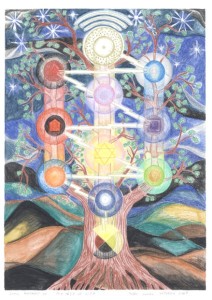Before I begin an quick reminder for those in Singapore: This Sunday 16th January, 9.30-11.30am sees the first of 2011’s Meditation Intensives. In this intensive we will be doing simple meditations based around the principles outlined in my article on “Meditating with the Tao” …If you can make it I hope to see you there!
I was recently sent an article by a friend written in the Guardian newspaper on how mindfulness meditation is proving to be useful for developing overall mental wellbeing, and proving to be effective in helping prevent relapses in psychological disorders such as depression. Anyone who has tried meditation will know how effective it can be for calming the mind, reducing stress and making life altogether more manageable and enjoyable. However, it needs to be clearly understood I think that meditation in and of itself will never be able to replace the ability of good conventional psychology and psychoanalysis to solve many mental and emotional problems. One fundamental reason for this is that the traditional purpose of meditation, and therefore its fundamental technique and outlook, are fundamentally different from that of conventional psychology and psycho analysis.
- The main purpose and function of meditation is mainly to magnetize our consciousness toward its next higher, or deeper level of development. In this sense it is fundamentally evolutionary and developmental in nature. It definitely has therapeutic side effects, but really it is a science and an art form (see my previous article on “Is Your Meditation Therapy, Artform or Spiritual Practice?” ). Anyone who has interfaced with any spiritual community where meditation is practiced will know first had that it is perfectly possible for a person to be quite a highly realized meditator and fundamentally psychologically dysfunctional!
- The main purpose of good conventional psychology and psychoanalysis is to fix the parts of our consciousness and mind that have already developed, but have become dysfunctional. The fundamental job of psychology (psyche meaning “soul”) is to fix the ailments of the soul. This means to fix the dysfunctions that we experience in our sensori-motor and emotional beings (psychoses), as well as the dysfunctions and repressions of our cognitive or thinking nature (neuroses). From this definition we can see that the fundamental job of psychoanalysis is therapeutic.
As I mentioned above, meditation does have many therapeutic qualities, but fundamentally its impulse is to magnetize our consciousness to its next level of depth and capacity. It is NOT designed to fix that which is already in the mind but broken. This is the job of psychology. One particular area where meditation will not help, and may make the issue worse, is repression. Meditation may help you live with repression, but it won’t help you see it, dig it out of your consciousness and fix it! This is why people who have been meditating for twenty years often come to the painful realization that they still suffer from anxiety, depression and other issues, and simply doing more meditation is not the solution…
I am aware that there is some cross over between meditation and psychology, for example:
- Cognitive psychology and positive psychology can stimulate a person’s mind toward the next level of inner growth
- The great world spiritualities are often accompanied by a quite complex psychological outlook. For example in the Tibetan Buddhist Tradition that I received my meditative education in there was a lot of studying the inner dynamics of the mind, and our psychological self. However, this is not the same as conventional therapeutic psychology, and does not contain techniques or insights for a lot of fundamental psychological malaise, the most obvious example being repression.
So the basic message of the above is that meditation and good modern psychology need to go together to createbalanced, integrated personal growth (which is one reason why I offer two types of coaching; meditation coaching and transpersonal (as in transpersonal psychology) coaching).
A final point I want to end with is that, although meditation does not solve all our mental problems per se, one thing that is does do is activate our minds natural capacity for self-healing, and in and of itself this IS powerful medicine.
Thanks for reading,
Yours in the spirit of integration,
Toby
PS: I’ll finish off the second part of the “Meeting your needs through meditation” next week.
PPS: If you are not aware already, I have a Mental Fitness blog where I tend to write most of my psychologically based and positive thinking articles. Feel free to check it out!
© Toby Ouvry 2011, you are welcome to use this article, but you must seek Toby’s permission first! Contact info@tobyouvry.com



